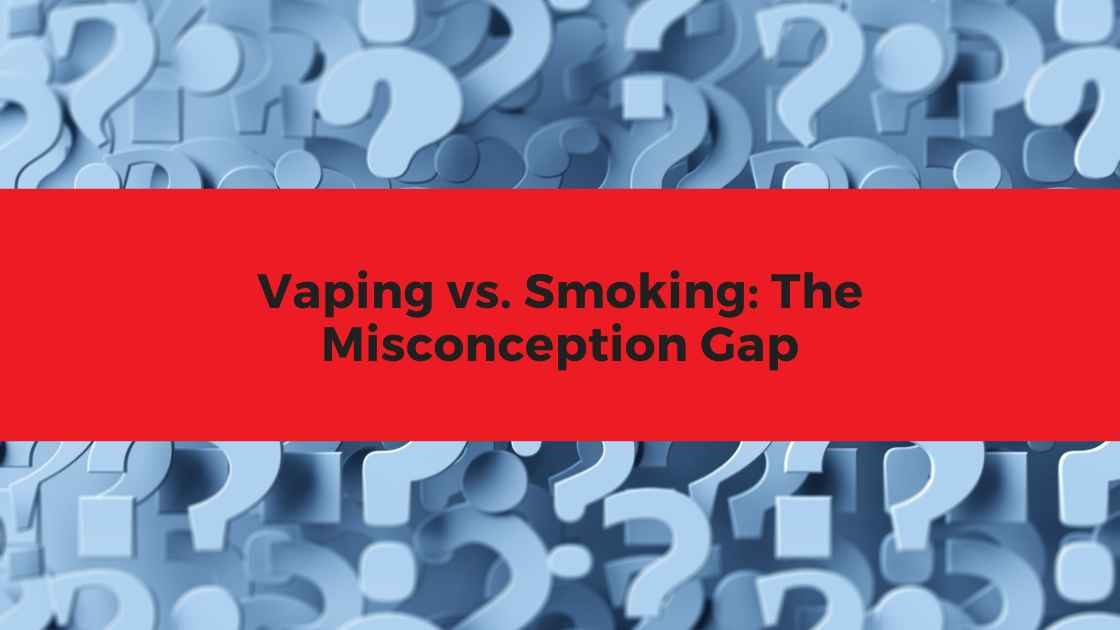Vaping vs. Smoking: The Misconception Gap
Many smokers who could benefit from switching to less harmful alternatives are held back by a concerning misconception: they believe vaping is just as harmful as – or even worse than – traditional cigarettes. This misperception appears to be growing, potentially hampering public health efforts aimed at reducing smoking-related harm.
The Misconception Problem
Recent research paints a troubling picture of how smokers perceive vaping. In England, a 2024 study found that 57% of smokers believed vaping was equally or more harmful than smoking cigarettes. This is represents a 16% increase from 2014 when 41% of smokers recognised vaping as equal or more harmful. By June 2023, the proportion who thought e-cigarettes were less harmful had decreased by 40%.[1]
Similar patterns emerge in the United States, where a 2020 study indicated that approximately 41% of adults did not believe vaping was less harmful than smoking.[2] These misconceptions cross borders and appear to be growing more prevalent over time.
Why This Matters
The consequences of these misconceptions extend beyond simple statistics. When smokers incorrectly believe that vaping offers no harm reduction benefits compared to cigarettes, they’re less likely to make the switch. This directly impacts public health initiatives like England’s “swap to stop” campaign, which aims to help smokers transition away from traditional cigarettes.[3]
What’s Driving the Misconception?
Several factors appear to be contributing to these misperceptions:
- Media coverage of events like the 2019 EVALI (e-cigarette or vaping product use-associated lung injury) outbreak, which was later linked to illicit cannabis vaping products containing vitamin E acetate rather than nicotine e-cigarettes
- Increased attention to youth vaping concerns since 2021
- Inconsistent messaging from health authorities and other sources
Closing the Knowledge Gap
For public health strategies aimed at reducing smoking-related harm to succeed, addressing these misconceptions is crucial. Current evidence suggests that vaping exposes users to fewer toxicants than traditional cigarettes, particularly those associated with cancer, lung disease, and cardiovascular disease.[4]
Clear, evidence-based communication is needed to help smokers make informed decisions about potential harm reduction options. While neither vaping nor smoking is risk-free, providing accurate information about relative risks could help more smokers make choices that may reduce their exposure to harmful chemicals.
References:
[1] “Trends in Harm Perceptions of E-Cigarettes vs Cigarettes Among Adults Who Smoke in England, 2014-2023,” JAMA Network Open, February 28, 2024. https://jamanetwork.com/journals/jamanetworkopen/fullarticle/2815561
[2] “An Observational Study of Vaping Knowledge and Perceptions in a Sample of U.S. Adults,” PMC, June 24, 2020. https://www.cureus.com/articles/35111-an-observational-study-of-vaping-knowledge-and-perceptions-in-a-sample-of-us-adults#!/
[3] “GOV.UK speech on smokefree 2030.” https://www.gov.uk/government/speeches/minister-neil-obrien-speech-on-achieving-smokefree-2030-cutting-smoking-and-stopping-kids-vaping#:~:text=Cutting%20smoking%20is%20one%20of,the%20health%20impact%20of%20smoking
[4] “King’s College London news on vaping harm,” 2022. https://www.kcl.ac.uk/news/vaping-substantially-less-harmful-than-smoking-largest-review-of-its-kind-finds
Vaping Misinformation Detector: How we counter misinformation from web content
Learn about our tool to identify and provide counter-arguments to misinformation in articles online.
The Vaping Misinformation Detector employs advanced natural language processing to analyse content and provide rebuttals with links to scientific research and official sources.



Comments are closed here.